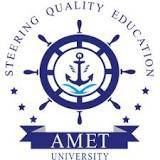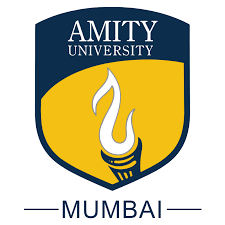|
Subject
|
Syllabus
|
|
Mathematics
|
Laws of Indices, Complex Numbers, Algebra of Complex Numbers, cube roots of unity and its properties, D-Moivre’s Theorem. simple problems. Sequence and Series: A.P., G.P. Quadratic Equations. Solutions of Quadratic Equation in the complex number system. Binomial definition of permutation – combination with formulae, Binomial Theorem for positive integral index, the general term, the middle term. Matrix. Determinant, Cramer’s rule [unique solution].
Trigonometric ratios of associated angles: compound angles – multiple and sub-multiple angles. General solution of trigonometric `equation. Inverse circular function.
Coordinate system, Distance between two points, section formulae, and formulae for area of a triangle – problems, straight line – different forms. The angle between two straight lines, condition of parallelism and perpendicular of two straight lines, a distance of a point from a given line. Standard equation of a circle, simple properties of parabola, ellipse, hyperbola.
Calculus: Function, identity polynomial, rational, modulus and signum functions with their graphs even, odd, periodic and parametric functions. Differential calculus, limit and continuity, differentiation of parametric, logarithmic and implicit functions. Successive differentiation up to 2nd order problems. Application of derivatives. Integral calculus: Integration by substitution, by parts. Definite integral – evaluation of the definite integral. Application of definite integral. Differential equation: solution of differential equation of 1st order. Solution of homogeneous differential equation of 1st order and 1st degree.
Vector: addition of vectors, dot product, cross product position vector of a point dividing a line segment in a given ratio.
|
|
Physics
|
Units of measurement; Dimension of physical quantities, Motion in a straight line; definitions, Graphical analysis. Equations of motions. Scalar and vector quantities, Scalar and vector products of vectors. The frame of reference Newton’s laws. Law of conservation of linear momentum. Friction, Uniform circular motion; vehicle on a level circular road / banked road. Work, Energy & Power. Centre of mass, Moment / angular momentum, Problems. Moment of inertia and radius of gyration. Law of gravitation. Gravitational potential.
Kepler’s laws of planetary motion, geostationary satellite. Elastic behaviour, Hooke’s law; Young modulus, bulk modulus, shear modulus of rigidity, Poison’s ratio; elastic energy. Pascal’s law and its application.
Thermal physics –thermal expansion; ideal gas laws, isothermal and adiabatic processes; anomalous expansion calorimetry, Cp, Cv. Heat transfer, Newton’s law of cooling, thermal conductivity. Thermal equilibrium, zeroth law / first law of thermodynamics. Equation of state of a perfect gas, Kinetic theory of gases.
Periodic motion, Simple harmonic motion [SHM]; Simple pendulum, free, damped and forced vibration, resonance.
|
|
Chemistry
|
Chemical industries.
Chemical Equation, Percentage composition, empirical formula, molecular formula, Problems.
Extranuclear Structure Of Atom: Orbital, subshell, shell. Quantum numbers [n, l, m, s]. Pauli Exclusion Principle, Hund’s rule of maximum multiplicity. Auf – bau principle. Ground state electronic configuration of atoms. Classification of Elements and Periodicity in Properties: present form of the periodic table, S – block and P – block elements. Periodic trend.
Chemical Bonding And Molecular Structure, Hybridization involving s and p orbitals and shapes of some simple molecules. Hydrogen Bond.
Gaseous State Of Matter: numerical problems. Liquid State of Matter. Thermodynamics System: Types of system, Work, heat, energy, First Law of Thermodynamics – internal energy and enthalpy, Entropy and Gibbs Free Energy. Second Law of Thermodynamics. Significance of the relation▲G = ▲H – T ▲S.
Equilibrium And Acidimetry–Law of Mass Action, Le Chatelier Principle – simple application. pH and pH scale. Buffer solution. Simple calculation of pH. Acidimetry and Alkalimetry. Hydrogen, Water: Expression / Estimation of hardness of water. Estimation of hardness of water. Important water quality parameters and their significance. Hydrogen Peroxide. Preparation and Uses of Sodium carbonate, sodium hydroxide, calcium oxide, bleaching powder, borax, limestone.
Organic Chemistry And Organic Compounds: Estimation of nitrogen [Kjeldahl’s Method]. Classification of organic compounds. IUPAC nomenclature, Alkanes, Alkenes, Alkynes, Arenes, Fuels, Petrochemicals, Lubricants.
Environmental Chemistry: Air Pollution, Water Pollution, Soil Pollution.
|
|
Fundamentals of Mechanics
|
Concept of Engineering Mechanics: Statics & Dynamics, Scalar quantity, Vector quantity, Addition & subtraction of Vectors.
System of Forces: Definition of Force, System of Co-planner forces, Resultant Force, problems.
Moment & its Applications: Definition& Type, Physical significance, Simple problems.
Equilibrium of Force system: Lami’s theorem, Condition of equilibrium of co-planner & concurrent force / non-concurrent force system, related problems.
Friction: Concept of Friction & its types, Simple problems.
Simple Lifting Machines: Definition of common terms, Study of Simple machines. Simple related problems.
Centre of Gravity: Concept & definition, Formulae for centroids of simple areas. Simple related problems.
Moment of Inertia: Definition, Theorems, Radius of Gyration, related problems. General Awareness.
|
|
Computer Application
|
Introduction to Computer Systems: Definition, Evolution, Generations, Computer Systems, Computer Organization, Input Devices, Output Devices, Computer Memory, Number Systems and Computer Codes.
Computer Software and Programming Languages: Definition and classification of software, DOS: Working with MS DOS Commands, Algorithm, Flowchart, Concept of High and Low-Level Languages, Windows OS, Word Processing, Spread Sheet, Internet: Browsing, Use of search engines, E-mail. Numerical Aptitude.
|




















